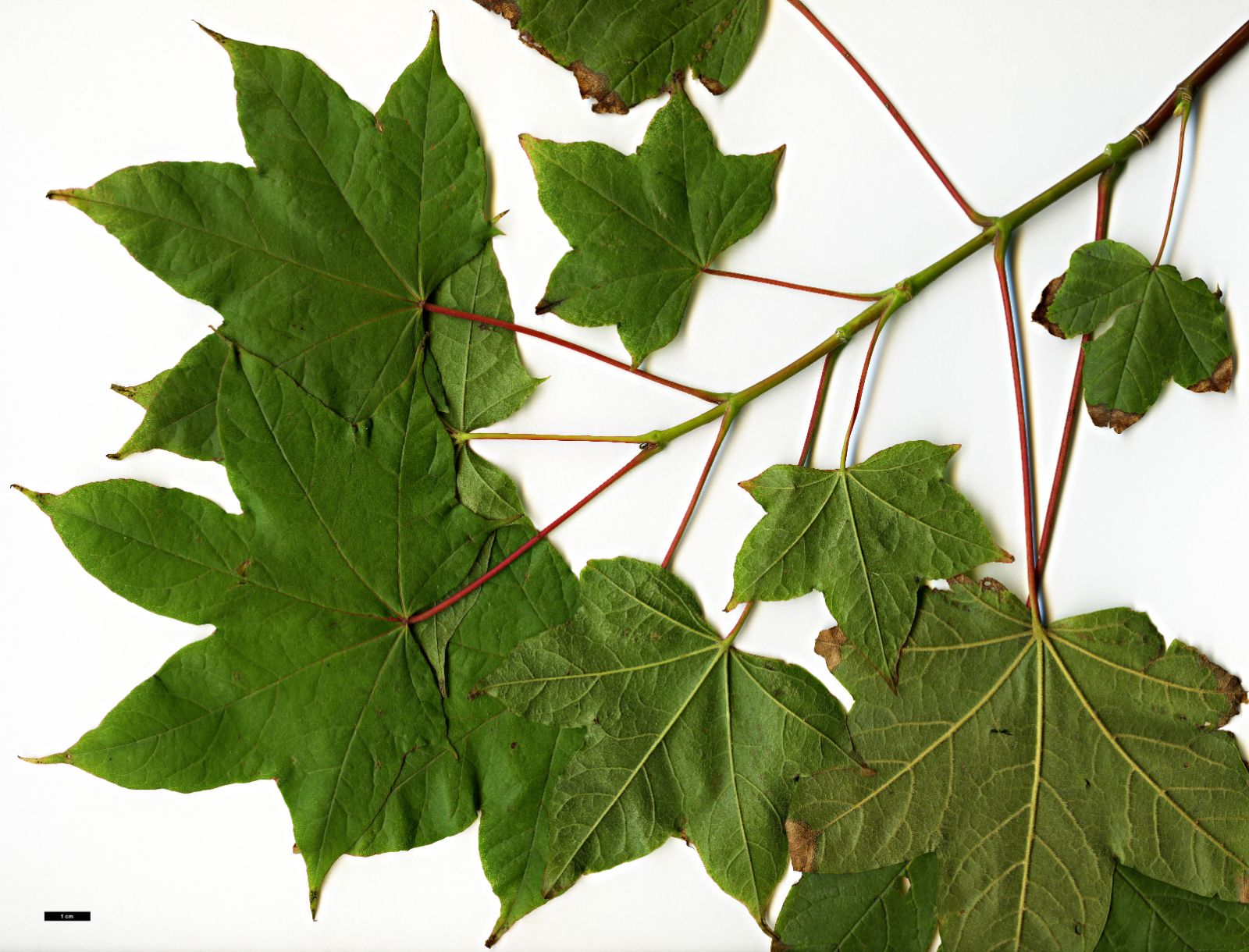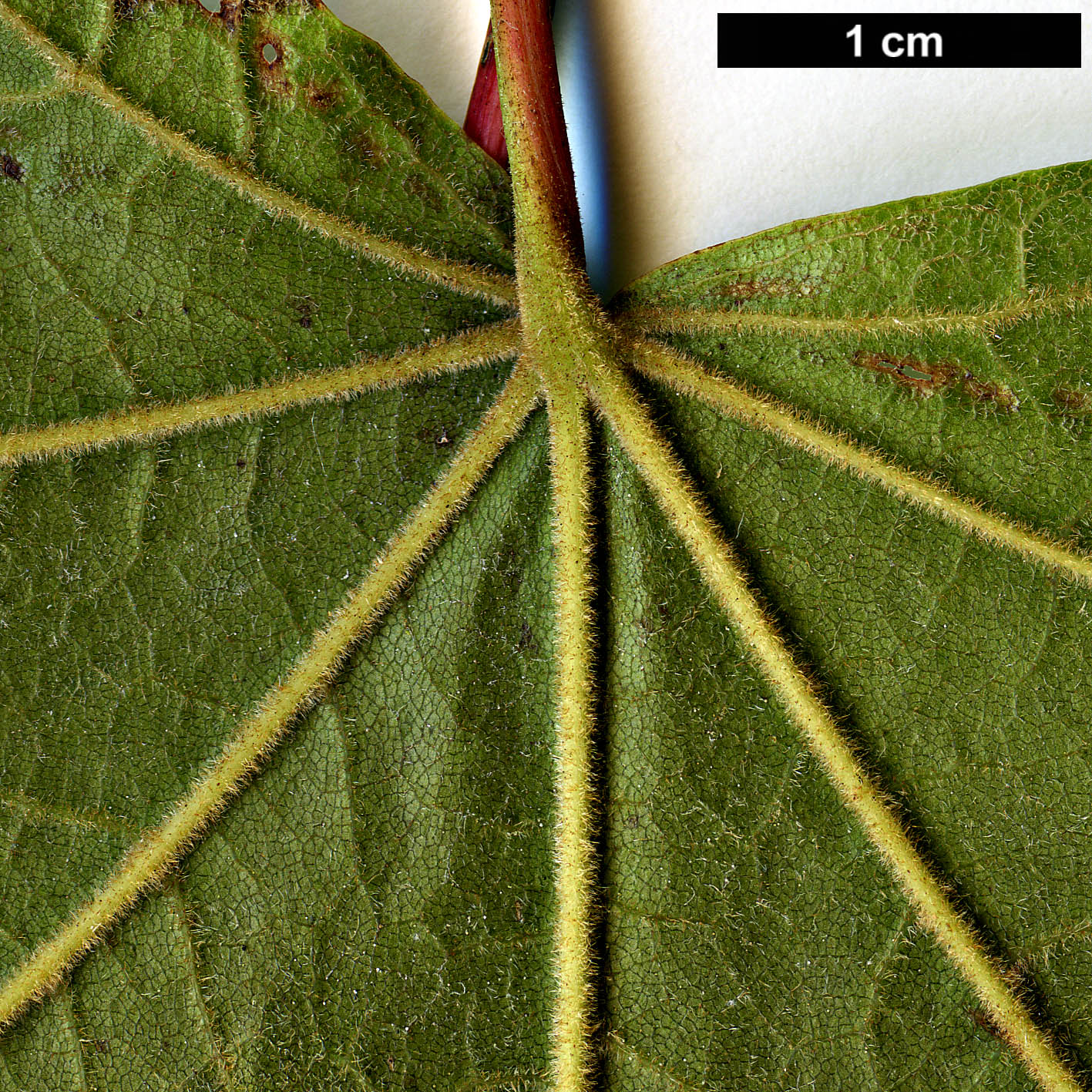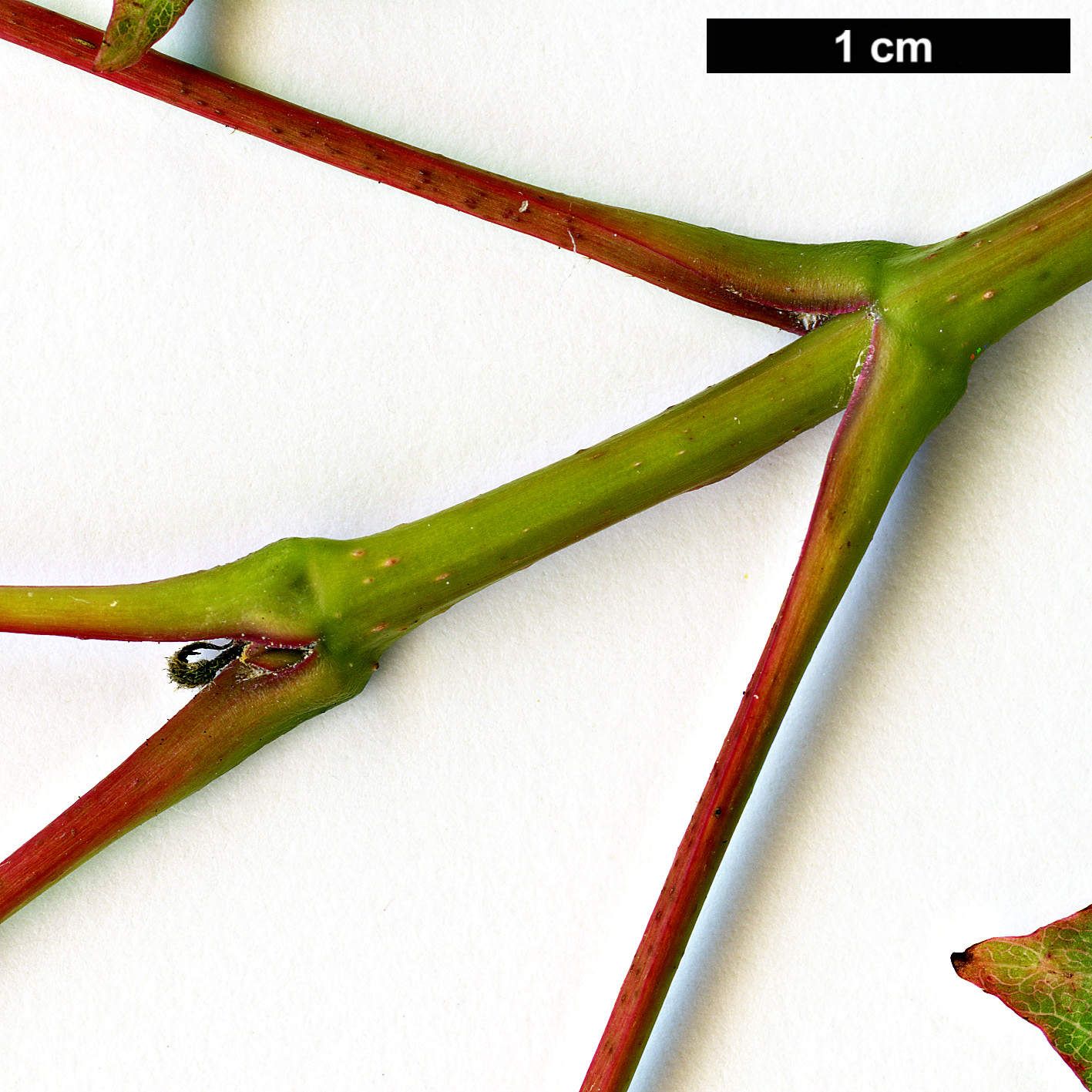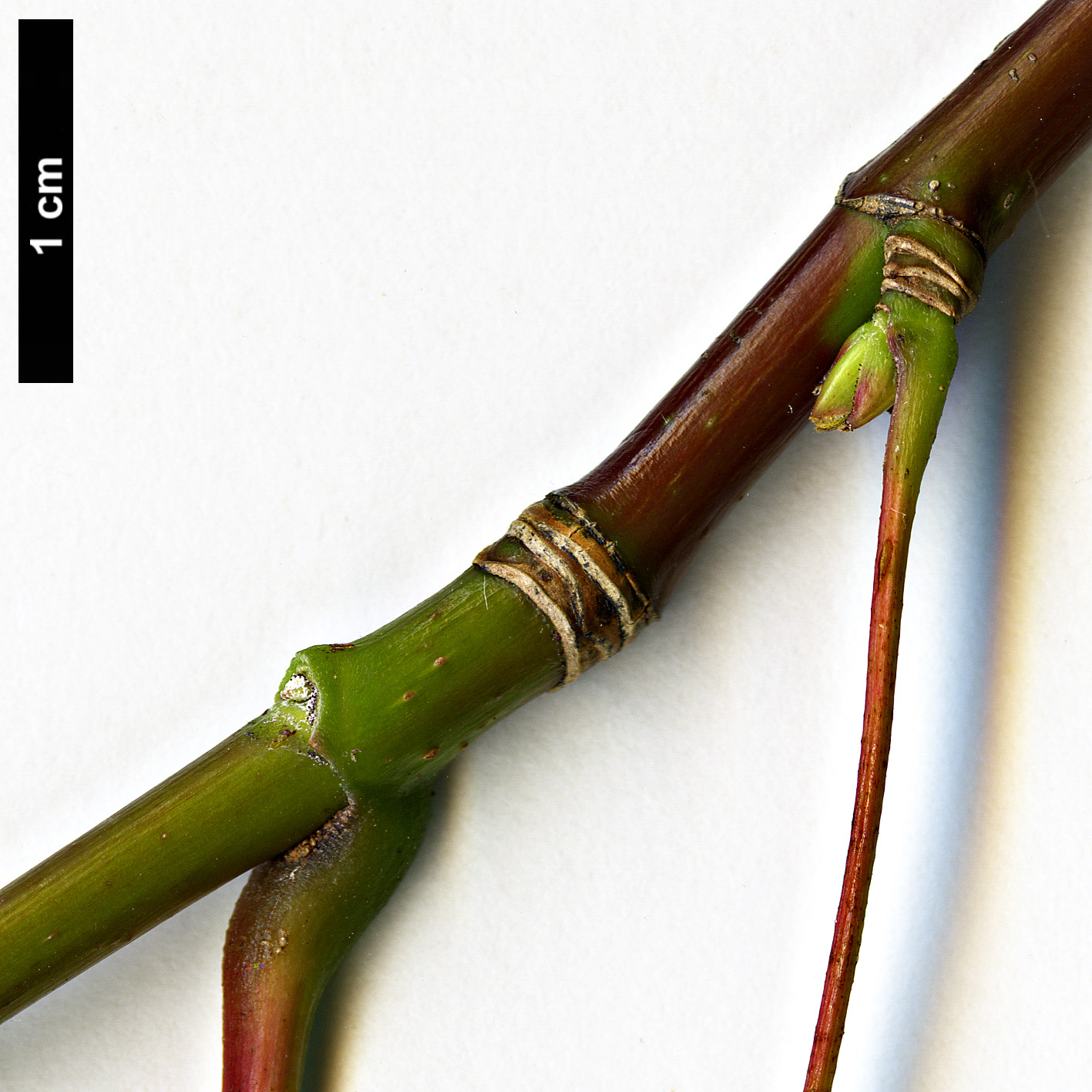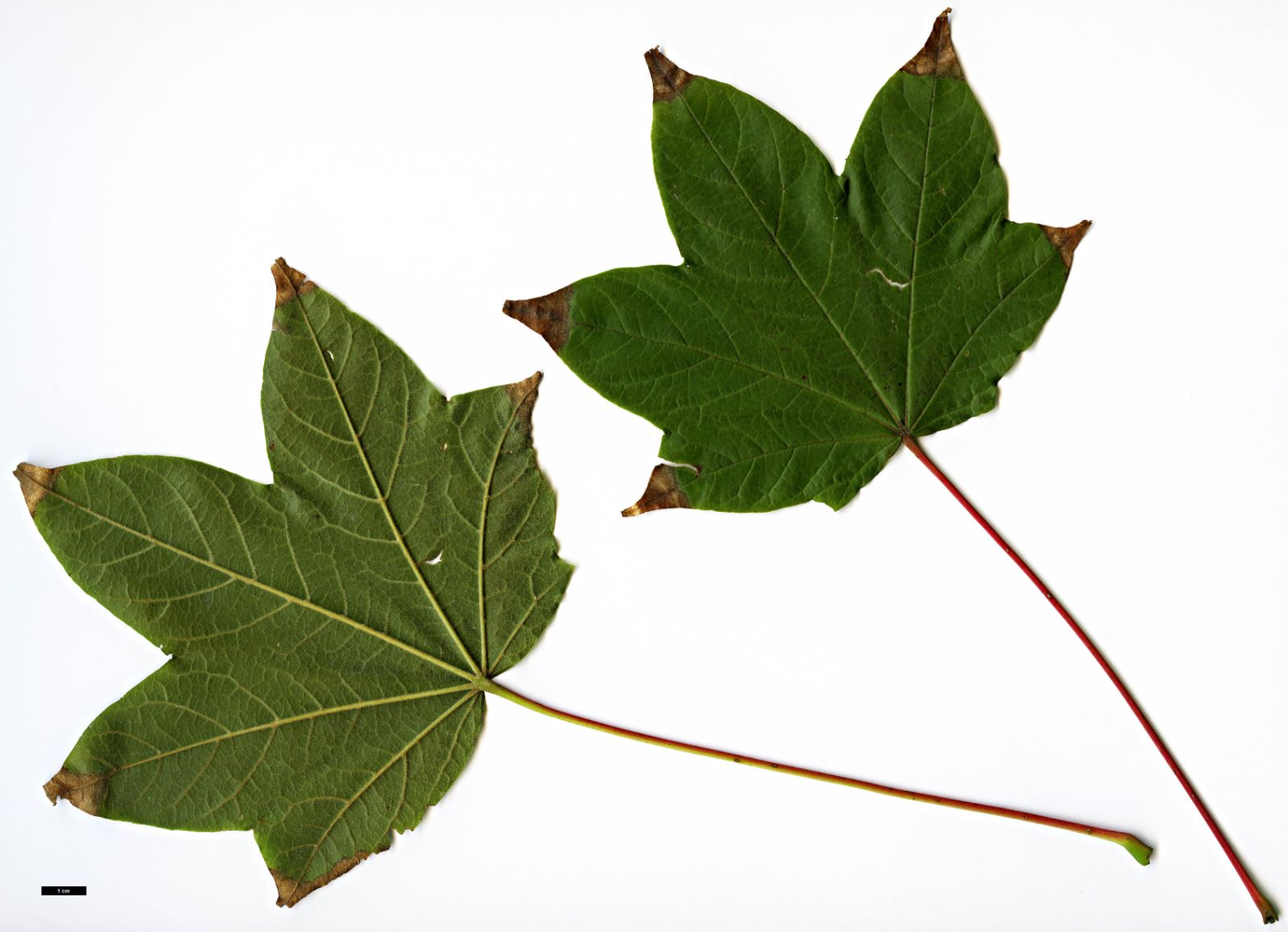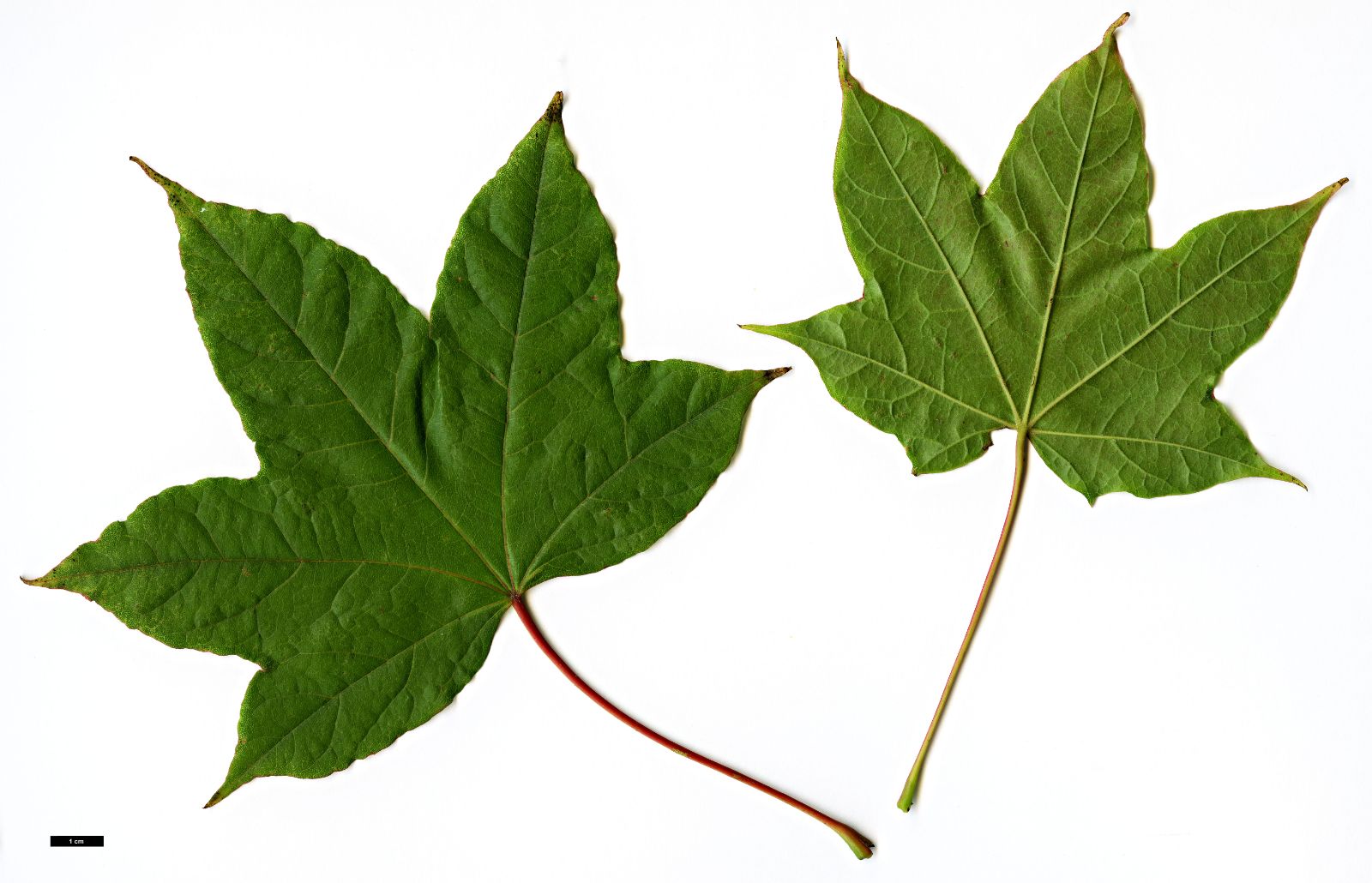Acer tibetense
Sponsor
Kindly sponsored by
The Wynkcoombe Arboretum
Credits
Dan Crowley (2020)
Recommended citation
Crowley, D. (2020), 'Acer tibetense' from the website Trees and Shrubs Online (treesandshrubsonline.
Genus
- Acer
- Sect. Platanoidea
Other taxa in genus
- Acer acuminatum
- Acer amplum
- Acer argutum
- Acer barbinerve
- Acer buergerianum
- Acer caesium
- Acer calcaratum
- Acer campbellii
- Acer campestre
- Acer 'Candy Stripe'
- Acer capillipes
- Acer cappadocicum
- Acer carpinifolium
- Acer 'Cascade'
- Acer caudatum
- Acer ceriferum
- Acer chapaense
- Acer chienii
- Acer circinatum
- Acer cissifolium
- Acer × conspicuum
- Acer cordatum
- Acer coriaceifolium
- Acer × coriaceum
- Acer crataegifolium
- Acer davidii
- Acer diabolicum
- Acer distylum
- Acer divergens
- Acer duplicatoserratum
- Acer elegantulum
- Acer erianthum
- Acer 'Esk Flamingo'
- Acer fargesii
- Acer fenzelianum
- Acer flabellatum
- Acer forrestii
- Acer franchetii
- Acer × freemanii
- Acer fulvescens
- Acer 'Gimborn'
- Acer ginnala
- Acer glabrum
- Acer 'Gold Coin'
- Acer granatense
- Acer grandidentatum
- Acer griseum
- Acer heldreichii
- Acer henryi
- Acer × hillieri
- Acer hookeri
- Acer hyrcanum
- Acer japonicum
- Acer kawakamii
- Acer komarovii
- Acer laevigatum
- Acer laurinum
- Acer laxiflorum
- Acer lobelii
- Acer longipes
- Acer macrophyllum
- Acer mandshuricum
- Acer maximowiczianum
- Acer maximowiczii
- Acer metcalfii
- Acer miaotaiense
- Acer micranthum
- Acer 'Mindavi'
- Acer 'Minorient'
- Acer miyabei
- Acer miyabei × campestre
- Acer monspessulanum
- Acer morifolium
- Acer 'Mozart'
- Acer oblongum
- Acer obtusifolium
- Acer okamotoanum
- Acer oliverianum
- Acer opalus
- Acer orientale
- Acer palmatum
- Acer papilio
- Acer pauciflorum
- Acer pectinatum
- Acer pensylvanicum
- Acer pentaphyllum
- Acer pentapotamicum
- Acer pictum
- Acer pilosum
- Acer pinnatinervium
- Acer platanoides
- Acer platanoides × amplum
- Acer platanoides × truncatum
- Acer × pseudoheldreichii
- Acer pseudoplatanus
- Acer pseudosieboldianum
- Acer pubinerve
- Acer pycnanthum
- Acer rubescens
- Acer rubrum
- Acer rufinerve
- Acer saccharinum
- Acer saccharum
- Acer sempervirens
- Acer 'Serpentine'
- Acer serrulatum
- Acer shenkanense
- Acer sieboldianum
- Acer sikkimense
- Acer 'Silver Cardinal'
- Acer 'Silver Ghost'
- Acer sinense
- Acer sinopurpurascens
- Acer spicatum
- Acer stachyophyllum
- Acer taronense
- Acer tataricum
- Acer tegmentosum
- Acer tenellum
- Acer tetramerum
- Acer tonkinense
- Acer triflorum
- Acer truncatum
- Acer tschonoskii
- Acer turkestanicum
- Acer tutcheri
- Acer ukurunduense
- Acer velutinum
- Acer wardii
- Acer 'White Tigress'
- Acer wilsonii
- Acer × zoeschense
A deciduous tree to 20 m. Bark greyish-brown. Branchlets glabrous, green, turning brown only after several years. Buds ovoid, with 5 to 10 pairs of imbricate scales, brown. Leaves broadly pentagonal in outline, base cordate to rounded, (3–)5(–7) -lobed, 6–15 × 5–15 cm, lobes broadly ovate, apically acute to acuminate, margins entire, upper surface mid to dark green, lower surface pale green, densely tomentose throughout, petiole to 15 cm long, green, often grooved, broadest at base, exuding a milky sap when broken; autumn colours yellow to red. Inflorescence corymbose. Flowers, 5-merous, sepals oblong, ~3 mm long, petals obovate, 4–5 mm long, stamens 8. Samaras 3.5–4 cm long, wings spreading horizontally or nearly so. Nutlets flattened. Flowering in April (China), appearing with the leaves, fruiting in October. (Fang 1939; Xu et al. 2008).
Distribution China South eastern Xizang India Aranachul Pradesh
Habitat Forests and valleys between 1600 and 2700 m asl.
USDA Hardiness Zone 8-9
RHS Hardiness Rating H4
Conservation status Vulnerable (VU)
Originally in cultivation from a Frank Kingdon-Ward collection made in Tibet (now Xizang Province, China), what was seemingly the sole tree, at Exbury Gardens, Hampshire, UK, was lost sometime between 1980 and 2012 (K. Rushforth pers. comm. 2020). However, material has recently been re-introduced to UK cultivation, with plants present at the Sir Harold Hillier Gardens, Westonbirt Arboretum, and, once more, at Exbury. The Westonbirt plant, grafted on to A. platanoides, has grown vigorously since its planting in 2016 and has since been successfully repropagated. Its growth appears somewhat flimsy at first and it retains its leaves until late in the year, showing little autumn colour.

